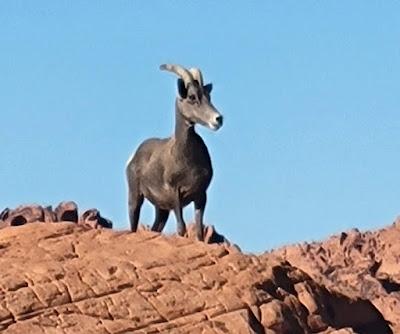We continued our September trip home to Yuma with a few more stops along the way. Our next stop was the Dinosaur National Monument in Utah. The drive from Wyoming to Utah was one of the most remote stretches of road we've been on. The only sign of humans were the power lines and an occasional water tank for the cattle we saw. A lot of open range ranches in this area.
Dinosaur National Monument is located along the northern borders of Colorado and Utah. It is considered one of Earth's richest known dinosaur fossil beds from the Jurassic period, 150 million years ago. Many dinosaurs died during a draught near a river's edge. When rains returned, floodwaters carried the bones of over 500 dinosaurs to this area. Here is a picture of the entrance to the Utah visitor center.
In 1909 paleontologist Earl Douglass, of Pittsburgh's Carnegie Museum, discovered the site. In 1915, President Wilson established Dinosaur National Monument to protect the 80 acres around the Carnegie Quarry. In 1938 President Franklin Roosevelt expanded the monument to cover over 200,000 acres.
 |
| Paleontologist Earl Douglass |
 |
| That's me touching one of the bones |
The scenery outside of the exhibit hall is vast and beautiful. There is a trail that goes down among these hills where you can see more fossils. It was quite hot the day we were there, so we skipped the hike.
We drove further into the park to see some petroglyphs. The sun was very bright, so it wasn't the best conditions for getting great photos. Here are a few I was able to see.
This rock formation was called Turtle Rock.
Unfortunately, at this point in the day, the check engine light came on in our car. Kevin was able to limp it back to the visitor center where we spent the rest of the day getting it towed, finding a rental car, and lining up a hotel for the weekend. Of course, these kinds of things always seem to happen on the weekend.
The closest town to the monument was Vernal, Utah where the car was towed to a service shop for a Monday appointment. Vernal has embraced the dinosaur theme.
On Sunday we drove to the Colorado section of Dinosaur National Monument. After a stop at their visitor center, we drove the scenic 31 mile each way road to see the canyons. There are no dinosaur bones in this area. There were a lot of free range cattle along and in the road.
 |
| The color variation on these rocks is so unique! |



























































